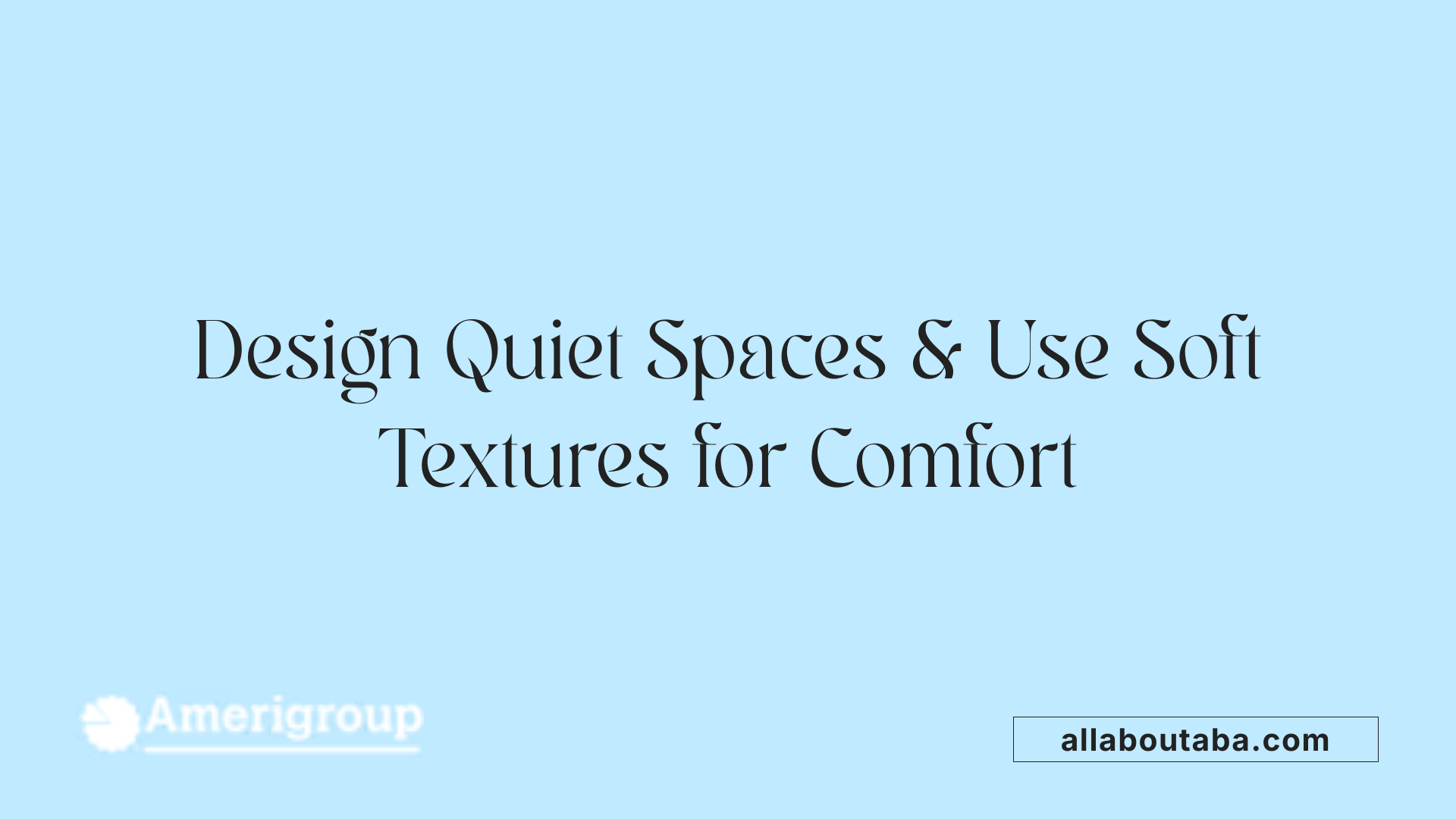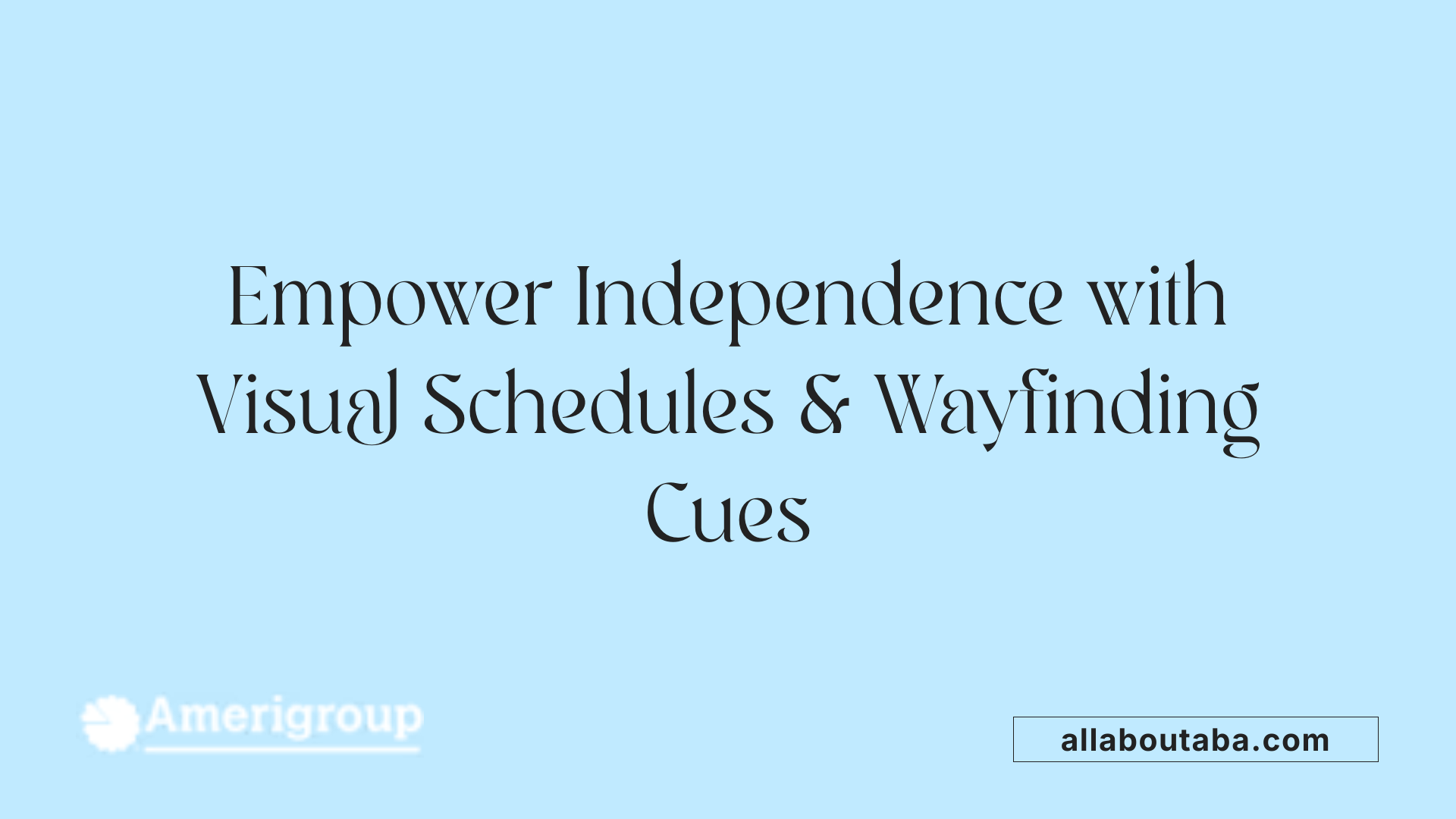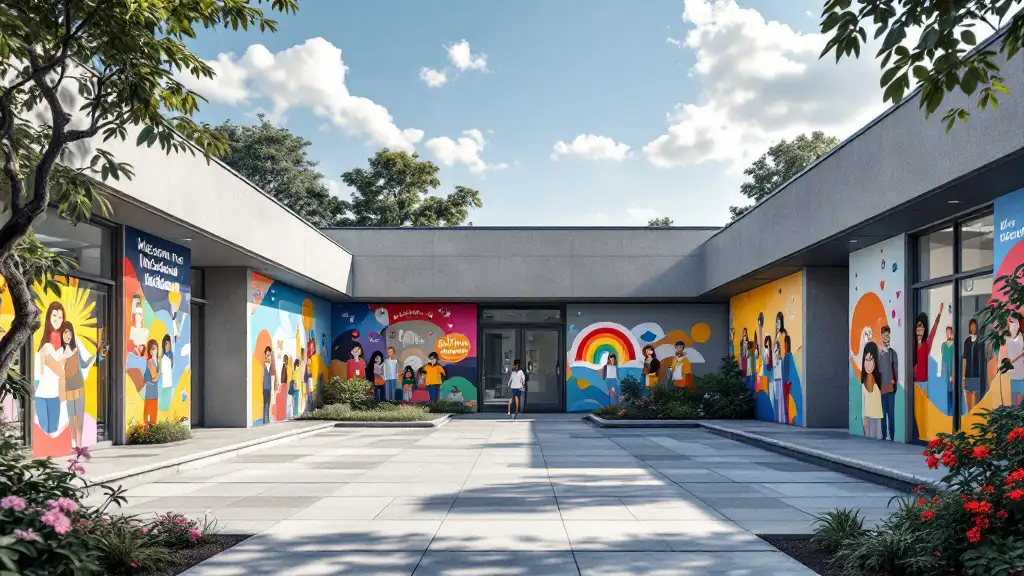How To Create Autism-Friendly Community Spaces
Building Communities that Embrace Neurodiversity
Creating community spaces that are welcoming, accessible, and supportive for individuals with autism involves thoughtful planning and implementation of inclusive features. This guide explores practical strategies, environmental adjustments, and frameworks that ensure such spaces foster understanding, independence, and social participation for autistic individuals.
Foundations of Autism-Friendly Design

Understanding autism spectrum disorder (ASD) and its sensory sensitivities
Autism Spectrum Disorder (ASD) impacts how individuals perceive and interact with their environment. Many autistic people experience heightened sensitivities to sensory stimuli such as bright lights, loud sounds, strong smells, or textured surfaces. These sensitivities can cause discomfort, stress, or overload, making environmental design crucial for supporting their well-being. Creating spaces that consider these sensory challenges involves implementing calming features and reducing overwhelming stimuli.
Importance of predictability, routine, and safety in community spaces
Autistic individuals tend to thrive in environments that are predictable and structured. Consistent routines, clear expectations, and well-defined spaces help reduce anxiety and foster a sense of safety. Visual supports like schedules, signs, and transition cues enable better navigation and understanding of routines. Simple, visually clear layouts and predictable patterns for movement and activities make community spaces more accessible and comfortable.
Role of participatory planning with autistic individuals and their families
Involving autistic individuals and their families in the planning process ensures that environments meet actual needs and preferences. Participatory workshops, feedback sessions, and co-design initiatives foster collaboration. This inclusive approach helps tailor sensory elements, safety features, and community activities to address specific sensitivities and support autonomy. Listening to lived experiences and preferences enhances the relevance and effectiveness of interventions.
What are effective methods and best practices for designing autism-friendly community spaces?
Designing autism-friendly spaces involves integrating sensory-friendly features such as quiet zones, sensory rooms, adjustable lighting, and sound-absorbing materials. The ASPECTSS framework guides designers to focus on acoustics, spatial sequencing, predictability, safety, and accessible escape zones. Clear signage, visual cues, wayfinding supports, and structured routines reduce uncertainty, encouraging independence and comfort. Emphasizing outdoor access, natural environments, and retreats further promotes calming and inclusive atmospheres.
What frameworks and considerations should be used for creating inclusive environments for autistic individuals?
Creating inclusive environments requires adopting frameworks that emphasize neurodiversity and self-determination. Considerations include sensory accommodations, predictable routines, and accessible communication methods like visual supports and augmentative and alternative communication (AAC). Engaging autistic communities in decision-making ensures environments are respectful, empowering, and tailored to diverse needs. Evidence-based practices such as positive reinforcement, structured teaching, and social supports foster participation and social integration.
What environmental adjustments support autistic people's needs in community areas?
Adjustments include controlling noise levels, managing auditory stimuli, and providing well-lit spaces with adjustable lighting options. Quiet zones, calming spaces, sensory rooms, and designated areas reduce overload. Visual aids like picture schedules, clear signage, and wayfinding cues support understanding and navigation. Implementing structured routines and advance notifications for changes help individuals feel prepared. Minimizing environmental triggers like flickering lights or strong odors enhances comfort, while autism-friendly hours and sensory events improve access.
What practical steps can be taken to adapt community spaces for autism accessibility?
Practical adaptations include installing soft lighting, soundproofing, and creating quiet zones. Providing sensory tools like sunglasses and ear defenders supports sensory regulation. Clear signage with visual supports, sensory maps, and wayfinding aids enhance navigation. Organizing autism-friendly events—such as sensory movie screenings or quiet hours—encourages participation. Training staff on autism awareness and involving autistic individuals in design processes ensures environments are truly responsive. These steps foster greater accessibility and community acceptance.
What guidance and resources are available to make community spaces more supportive and inclusive for autism?
Organizations such as the Autism Society and Sensory Trust offer resources and strategies for developing sensory-friendly environments. Design frameworks like ASPECTSS and initiatives from projects like European SENSHOME provide guidelines for managing acoustics, lighting, and spatial layout. Community involvement through workshops, feedback, and collaborative planning ensures spaces reflect the needs of autistic individuals. Educational programs, staff training, and public awareness campaigns help reduce stigma and promote understanding. Inclusive practices in schools, workplaces, and venues—such as sensory rooms, visual supports, and flexible routines—further promote participation and acceptance.
Designing Sensory-Friendly Environments

Use of sensory tools like sunglasses, ear defenders, and tactile objects
In creating spaces that accommodate autistic individuals, incorporating sensory tools is essential. Sunglasses can help reduce glare from bright lighting, while ear defenders or noise-canceling headphones diminish overwhelming sounds. Tactile objects such as textured mats, fidget toys, and soft fabrics provide sensory input that can soothe or stimulate as needed. These tools serve as portable aids that enable individuals to self-regulate and feel more comfortable in challenging environments.
Incorporating soft textures, calming colors, and adjustable lighting
A foundational aspect of sensory-friendly design involves selecting calming visual and tactile elements. Soft textures in furniture and décor, along with calming colors like pastel shades and muted tones, can reduce stress and create a welcoming atmosphere. Adjustable lighting, including dimmable fixtures or color-changing LEDs, allows environments to be tailored to individual sensory preferences. These adjustments help prevent overstimulation and promote relaxation, making public spaces safer and more inclusive.
Creating sensory-friendly hours and activities
Implementing designated time periods for sensory-sensitive visitors is an effective strategy. Sensory-friendly hours often feature reduced noise levels, dimmed lights, and the removal of flashing or overstimulating décor. During these times, venues like cinemas, museums, and community centers can host activities specifically curated for autistic individuals, easing anxiety and encouraging participation.
What environmental adjustments support autistic people's needs in community areas?
Environmental modifications essential for autism-friendly community settings include controlling auditory stimuli by lowering background noise and managing loud sounds. Creating spaces with adjustable lighting reduces sensory overload from bright or flickering lights. Designated quiet zones or sensory rooms serve as retreats for individuals to decompress and regain calmness.
Visual supports such as picture schedules, visual cues, and clear signage facilitate navigation and understanding, minimizing anxiety often caused by unpredictability or complex environments. Structuring routines with visual timetables and providing advanced warnings for changes further enhance comfort. Efforts to reduce environmental triggers, such as overpowering scents, highly stimulating visuals, and crowded spaces, are vital. These adaptations ensure that community environments are welcoming and accessible to all.
What features and environmental adjustments support autistic people's needs in community areas?
Features like dimmable and adjustable lighting create adaptable spaces suitable for varied sensory sensitivities. Soundproofing materials and quiet zones enable self-regulation and provide sanctuary from noise pollution. Soft textures, calming décor, and sensory corners offer tactile and sensory comfort.
Providing sensory tools—such as weighted blankets, textured toys, and sensory mats—allows individuals to manage sensory input actively. Visual aids, including social stories, picture schedules, and clear directional signage, enhance comprehension and promote independence. Minimizing triggers like flickering lights, strong odors, and crowded settings ensures a more comfortable and inclusive environment.
| Feature | Purpose | Additional Details |
|---|---|---|
| Dimmable Lighting | Reduce visual overstimulation | Allows environment to be adapted to individual preferences |
| Quiet Zones & Sensory Rooms | Provide calming spaces | Designated areas for relaxation and self-regulation |
| Sensory Tools | Assist self-regulation | Noise-canceling headphones, tactile objects, weighted items |
| Visual Supports | Enhance understanding | Schedules, social stories, visual cues |
| Trigger Reduction | Minimize sensory overload | Fewer flashing lights, pleasant scents, controlled crowd density |
These environmental adjustments contribute significantly to creating community spaces that are accessible, supportive, and welcoming for individuals with autism, fostering full participation and comfort.
Implementing Visual Supports and Clear Signage

What are effective methods and best practices for designing autism-friendly community spaces?
Designing community spaces that are welcoming and accessible to individuals with autism involves a thoughtful integration of sensory considerations, visual supports, and predictable routines. Effective approaches include incorporating sensory-friendly zones such as quiet rooms and calming areas, which serve as refuge points for those experiencing sensory overload.
Using frameworks like ASPECTSS—focusing on Acoustics, Space, Predominance of visual cues, Environmental quality, Safety, and Syracuse elements—guides designers to create spaces optimized for sensory comfort. This includes attention to acoustics to minimize noise, clear spatial sequencing to enhance predictability, and safety features to foster a secure environment.
Engaging autistic individuals and their families through participatory planning ensures that environments align with actual needs, promoting both safety and social inclusion. Creating predictable routines through visual supports reduces uncertainty, allowing individuals to navigate spaces confidently.
Outdoor spaces should feature accessible pathways, natural elements, and designated retreat areas. These not only foster relaxation but also promote social interaction.
What guidance and resources are available to make community spaces more supportive and inclusive for autism?
Organizations such as the Autism Society and the Sensory Trust provide comprehensive resources and guidelines for developing autism-friendly environments. They advocate for sensory-sensitive design elements, including adjustable lighting, tactile pathways, and sound-absorbing materials.
Tools like the European SENSHOME project and the ASPECTSS framework assist planners in integrating sensory considerations into environment design. Collaborating directly with autistic individuals and families through workshops and feedback sessions ensures these spaces meet diverse needs.
Community education is also vital. Public awareness campaigns, staff training programs, and informational signage can help reduce stigma and enhance understanding. Implementing sensory rooms, visual supports, and flexible routines in public venues like libraries, shopping centers, and transportation hubs further supports participation.
For example, sensory-friendly hours or quiet zones during busy periods provide accessible options for autistic community members. These measures, coupled with ongoing community involvement, foster a culture of acceptance and inclusiveness.
Use of visual schedules and social stories
Visual supports such as schedules and social stories are essential tools in autism-friendly spaces. Visual schedules outline daily routines with pictures or symbols, providing predictability and reducing anxiety.
Social stories help prepare individuals for upcoming social situations or transitions, making unfamiliar environments less intimidating.
Clear signage and symbols for navigation
Effective wayfinding relies on clear, simple signage with symbols and visual cues. For instance, using universally understood icons for restrooms, exits, and emergency points ensures quick comprehension.
Designing signage with high contrast, large fonts, and minimal textual information enhances accessibility for those with sensory processing challenges.
Wayfinding cues and maps
Maps and directional cues should be visually straightforward, featuring color-coded pathways and recognizable landmarks. Maps placed at eye level or in accessible formats help users orient themselves.
Providing tactile or auditory wayfinding aids can further improve navigation, especially for individuals with combined sensory and mobility challenges.
| Support Features | Description | Benefits |
|---|---|---|
| Visual schedules | Pictorial routines | Reduce anxiety, foster independence |
| Clear signage | Icons and symbols | Quicker navigation, less confusion |
| Wayfinding maps | Color-coded routes | Easy orientation, safety |
| Sensory supports | Noise-canceling headphones, textures | Manage sensory overload |
| Participatory design | Involving autistic community | Tailored environments, better acceptance |
Creating comprehensive visual supports and signage enhances the overall inclusiveness of community spaces. These strategies not only assist autistic individuals in navigating environments confidently but also foster broader understanding and acceptance within the community.
Fostering a Culture of Inclusion and Acceptance
Creating autism-friendly community spaces is a multifaceted endeavor that benefits everyone by fostering acceptance, reducing sensory overload, and enabling full participation. By integrating sensory adjustments, visual supports, inclusive design principles, and community engagement, we can develop environments that honor the unique needs of autistic individuals. Continuous collaboration among designers, community members, and autism advocates, coupled with ongoing education and resource sharing, ensures these spaces remain welcoming, accessible, and enriching for all. Embracing these practices not only enhances the quality of life for autistic individuals but also builds more compassionate and understanding communities.
References
- Best Ways to Create a Autism-Friendly Environment for a Child
- Accessible environments
- Creating Welcoming Recreational Spaces for Individuals ...
- Ways To Promote Autism Inclusion in Your Community
- Creating Autism Friendly Spaces
- Best Ways to Create a Autism-Friendly Environment for a Child
- Built Environment Design and People with Autism ...
- Designing Living Spaces for Autism on a Budget
- AUTISM PLANNING AND DESIGN GUIDELINES 1.0
- Accessible environments
Other articles
Recent articles

The Role Of Teachers In Fostering Autism Peer Acceptance

Using Art Therapy To Support Children With Autism

Autism And Strategies For Addressing Sensory Defensiveness

Autism And The Benefits Of Structured Leisure Activities

How To Support Autistic Students During Exam Season

Autism And Goal Setting For Personal Growth

How To Use Gamification In Autism Learning Programs

How Schools Can Reduce Bullying Of Autistic Students

Early Intervention Strategies For Autism Spectrum Disorder

The Role Of Therapists In Autism Life Skills Coaching

How To Support Autistic Individuals In Crisis Situations

Autism And Self-Care Routines For Stress Management

Understanding Echolalia And Its Role In Autism Communication

Autism And Fine Arts Education Benefits

The Impact Of Multisensory Learning On Autism Education

How Family Counseling Supports Autism Household Dynamics

Best Practices For Inclusive Playgrounds For Autism

Best Practices For Autism-Friendly Shopping Centers

How Autism Affects Fine Motor Skill Development

Best Ways To Introduce Sensory Activities Into Daily Routines

How Sports Teams Can Be Inclusive Of Autistic Players

Autism And Strategies For Building Workplace Resilience

Autism And The Impact Of Hormonal Changes During Puberty

How To Support Autistic Students In Foreign Language Classes

Best Ways To Teach Money Skills To Teens With Autism

Supporting Siblings Of Children With Autism

Autism And Co-Occurring Gastrointestinal Disorders

The Role Of Art Projects In Autism Sensory Integration

How Schools Can Incorporate Sensory Break Spaces

Best Practices For Autism Sensory Regulation At School

Autism And Strategies For Teaching Organizational Skills

Understanding The Relationship Between Autism And Anxiety Disorders

Autism And Life Planning For Long-Term Care

Exploring Visual Supports In Autism Education

Ways To Encourage Social Interaction In Children With Autism

The Connection Between Autism And Dyscalculia

The Role Of Occupational Therapy In Transition Planning For Autism

The Role Of Physical Therapists In Autism Motor Skills Support

How To Teach Decision-Making Skills To Autistic Young Adults

The Connection Between Autism And Epilepsy

Best Practices For Transitioning Autistic Children Into New Schools

Autism And Time Management Challenges In Adulthood

The Role Of Visual Arts In Autism Communication Development

How To Address Tactile Defensiveness In Autism

Best Practices For Telehealth Autism Therapy

How To Help Autistic Children Develop Friendship Skills

How Schools Can Support Autistic Students In Career Prep

Best Strategies For Autism-Friendly Event Planning

Understanding Noncontingent Reinforcement In Autism Behavior Plans

How Drama Therapy Benefits Autistic Individuals

Best Practices For Autism-Friendly Fitness And Recreation Centers

Best Ways To Promote Healthy Social Media Use For Autistic Teens

How To Help Autistic Children Cope With Public Speaking

Autism And Strategies For Managing Unexpected Changes

Best Podcasts About Autism For Parents And Educators

Autism And The Impact Of Seasonal Changes On Behavior

The Role Of Diet In Managing Co-Occurring Conditions With Autism

Sleep Challenges In Autism And Practical Solutions

Best Ways To Build Daily Routines For Autistic Children

Best Practices For Supporting Autistic Entrepreneurs

Autism And Strategies For Navigating Large Social Gatherings

Adaptive Sports And Recreational Activities For People With Autism

Autism And The Benefits Of Story-Based Learning Activities

Understanding The Role Of Play In Autism Development

Autism And The Impact Of Environmental Noise On Learning

How To Create Autism-Friendly Community Spaces

Autism And Chronic Health Conditions: What To Know

The Role Of Care Managers In Autism Life Planning

How To Teach Social Boundaries To Autistic Children

How Autistic Individuals Experience Empathy Differently

How To Support Autistic Employees In Remote Work Settings

Autism And The Relationship Between Motor Skills And Learning

How To Create Community Resource Guides For Autism Families

How To Teach Daily Living Skills To Autistic Teens

Autism And The Impact Of Mind-Body Practices On Stress Reduction

Autism And The Benefits Of Outdoor Group Activities

How To Create Autism-Friendly Sensory Paths In Schools

Best Practices For Autism-Friendly Park And Recreation Areas

Autism And Strategies For Reducing School Refusal

Supporting Autistic Individuals In Public Speaking

The Role Of Diet In Managing Autism Symptoms

The Benefits Of Gardening Clubs For Autism Social Development

How To Prepare Autistic Children For Dental Visits

Autism And Employment: Career Paths That Work

Best Practices For Autism-Friendly Hotels And Lodging

The Impact Of Screen Time On Autism Development

Autism Screening Tools For Early Childhood

The Role Of Physical Exercise In Autism Therapy

Best Strategies For Supporting Autistic College Students

The Role Of Technology In Autism Early Detection

Sensory-Friendly Classroom Design Ideas For Autistic Students

The Role Of Speech Therapy In Building Social Communication Skills

Best Strategies For Handling Autistic Burnout In Adults

Autism And The Importance Of Predictability In Routine

Autism And Peer Education: Teaching Acceptance In Schools

Best Practices For Sensory-Friendly Libraries And Reading Rooms

Self-Advocacy Skills For Autistic Adults

The Role Of Technology In Autism Peer Communication

Promoting Physical Activity In Children With Autism

How To Prepare Autistic Children For Medical Procedures
We’re All About You, Your Family, and Your Child

